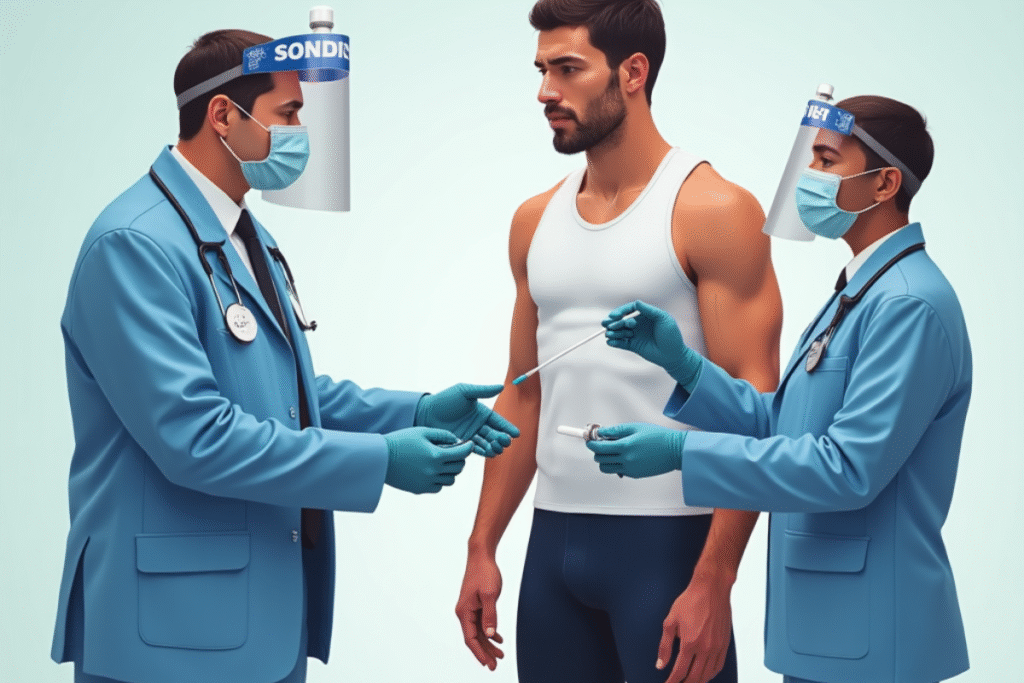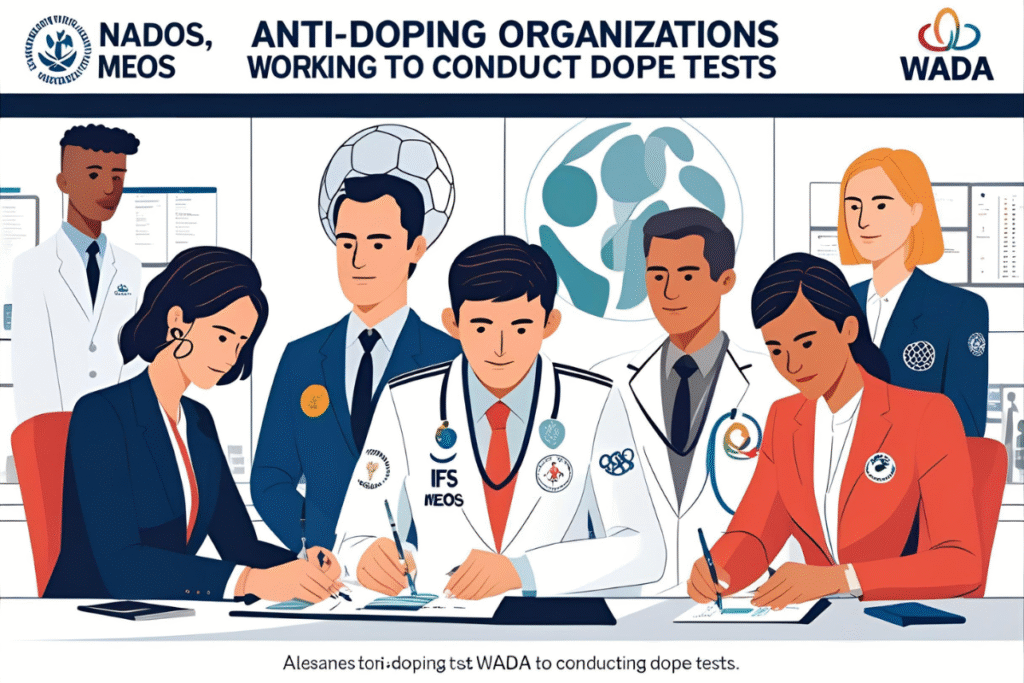Dope test is a method used to detect banned substances in athletes. It ensures fair competition and maintains integrity in sports.
The process involves sample collection laboratory analysis and reporting of results. Athletes also have specific rights during testing to protect their interests.
Understanding dope tests helps fans and players stay informed about anti-doping measures. Dive into this article to learn how sports remain clean and fair.
What is a Dope Test?

A dope test is a method used by Anti Doping Organizations ADOs to detect prohibited substances or methods in athletes.
Its primary purpose is to ensure fair competition protect the health of athletes and preserve the integrity of sport. Dope tests are conducted under strict regulations established by the World Anti Doping Agency WADA and they apply to all athletes regardless of sport or competition level.
Secondary keywords anti doping athlete rights sample collection WADA doping control performance-enhancing drugs
Objectives of a Dope Test
The main goals of a dope test include:
- Detecting banned substances or methods that could enhance performance unfairly.
- Protecting the health and well being of athletes from harmful drug use.
- Preserving the integrity and credibility of competitive sports.
- Ensuring compliance with international anti doping regulations.
Athlete Selection and Notification
Athletes can be selected for a dope test randomly based on competition results or through intelligence led testing. The selection process is designed to prevent predictability and maintain fairness across all levels of sport.
Once an athlete is selected a Doping Control Officer DCO or chaperone notifies the athlete explaining their rights and responsibilities.
Athletes are informed under which Anti Doping Organization’s authority they are being tested ensuring transparency and clarity during the process.
Rights and Responsibilities of Athletes
Athletes undergoing a dope test must:
- Report to the doping control station immediately unless excused for events like medal ceremonies.
- Provide accurate information about recent medication supplements or Therapeutic Use Exemptions TUEs.
- Follow instructions during sample collection while maintaining privacy and dignity.
These steps ensure that athletes are fully aware of the procedure while also protecting their rights throughout the testing process.
Reporting to the Doping Control Station
The doping control station is a secure location where the sample collection takes place. Athletes must check in with the DCO or chaperone who confirms their identity and explains the process.
While athletes may be temporarily excused for essential duties like media appearances or award ceremonies they must report promptly to ensure the integrity of the dope test.
Sample Collection Process
The core of a dope test involves collecting biological samples urine and sometimes blood under strict supervision. The athlete is provided with sealed sample collection vessels which they select themselves to ensure transparency.
Urine Sample Collection
Athletes are accompanied by a same gender DCO or chaperone to the collection area. They are instructed to wash their hands and provide the sample with an unobstructed view of the process.
A minimum of 90 milliliters of urine is required and part of the sample is reserved for measuring specific gravity to confirm suitability for analysis.
Blood Sample Collection
If a blood sample is needed a Blood Collection Officer BCO draws the sample using two vials, which become the A and B samples. These vials are essential for future verification if the A sample indicates an adverse analytical finding.
Dividing and Sealing Samples
Athletes divide their urine or blood into A and B sample bottles. The B sample serves as a backup for potential retesting.
Both bottles are sealed securely labeled and stored in a tamper evident manner. This ensures integrity during transportation to a WADA accredited laboratory.
Measuring Sample Suitability
Before sending the sample to the lab the DCO measures the urine’s specific gravity to ensure it is not too diluted. If it fails the test athletes may be asked to provide additional samples. This step guarantees the reliability of the dope test results.
Completing the Doping Control Form DCF
The DCF documents the athlete’s information including:
- Personal details and identity verification.
- Recent medications supplements or TUEs.
- Comments or concerns about the testing process.
The form is signed by both the athlete and the DCO and a copy is provided to the athlete for their records. This ensures transparency and accountability during the dope test.
Laboratory Analysis
All collected samples are sent to WADA accredited laboratories under strict chain of custody procedures. Samples are anonymized so that the laboratory analyzes them without knowing the athlete’s identity maintaining impartiality.
The A sample is analyzed first and if an adverse finding occurs the B sample may be tested for confirmation.
Role of WADA Laboratories
WADA accredited laboratories follow rigorous protocols to detect performance enhancing substances accurately. Advanced analytical techniques ensure that results are reliable reproducible and legally defensible if required in disputes.
Special Considerations for Minors and Athletes with Disabilities
Special rules apply for minors and athletes with disabilities during testing. These measures ensure their safety rights and fair treatment in sports.
Athletes and guardians are guided throughout the process making anti doping procedures more accessible and supportive.
Minors
Minors must be accompanied by an adult such as a coach manager or Doping Control Personnel representative during the dope test.
While they may have a representative during sample collection the representative cannot witness the actual passing of the sample.
Athletes with Disabilities
Athletes with physical visual or intellectual disabilities may request assistance from a representative or DCO. They can receive help handling collection equipment splitting samples or completing the DCF. Special accommodations ensure the testing process is inclusive fair and respectful.
Athletes Using Medical Devices
Those using condom drainage indwelling catheter drainage or self catheterization may follow specific procedures to provide a fresh sample safely. All equipment must be tamper evident to maintain the integrity of the dope test.
Anti Doping Organizations and Compliance

National Anti Doping Organizations NADOs International Federations IFs and Major Event Organizations MEOs are responsible for conducting dope tests.
They operate under WADA guidelines coordinating testing schedules athlete notifications sample collection and laboratory analysis.
Challenges and Innovations in Doping Control
Modern anti doping programs face challenges such as designer drugs micro dosing and evolving detection methods.
Innovations like the Athlete Biological Passport ABP track longitudinal biomarkers to detect abnormalities that indicate doping providing additional safeguards alongside traditional dope tests.
Just as understanding dope tests ensures fairness and safety in sports learning how to handle unknown calls like 201-913-3533 protects your privacy and security in daily life.
Conclusion
Dope tests play a vital role in protecting fairness health and integrity in sports by ensuring athletes compete on equal ground.Through strict procedures of sample collection, analysis, and reporting, the process maintains transparency and accountability at every step.
By safeguarding the rights of athletes including minors and those with disabilities anti doping measures promote inclusivity and trust in the system.
As doping challenges evolve innovations like the Athlete Biological Passport strengthen the fight keeping sports cleaner safer and more inspiring for future generations.
FAQs
What is a dope test in sports?
A dope test is a process used to detect banned substances or methods in athletes. Its purpose is to ensure fair play, protect athlete health, and maintain the integrity of sports.
Who conducts dope tests?
Dope tests are carried out by Anti Doping Organizations (ADOs), National Anti Doping Organizations (NADOs), and international sports federations, all operating under WADA guidelines.
How are athletes selected for a dope test?
Athletes can be selected randomly, based on competition results, or through intelligence-led testing. This prevents predictability and ensures fairness across all levels of competition.
What happens during sample collection?
Athletes provide urine or blood samples under the supervision of trained officials. Samples are then divided into A and B bottles, sealed securely, and sent to WADA-accredited laboratories.
What rights do athletes have during a dope test?
Athletes have the right to privacy, to be informed of the testing authority, to record any concerns on the Doping Control Form (DCF), and to receive a copy of their signed form.
How are samples analyzed in the laboratory?
Samples are anonymized and tested in WADA-accredited labs using advanced techniques. If the A sample shows a positive result, the B sample is tested for confirmation.
Are there special rules for minors and athletes with disabilities?
Yes, minors must be accompanied by an adult representative, while athletes with disabilities can request assistance during the process to ensure fairness and safety.
What challenges exist in modern doping control?
Challenges include designer drugs, micro-dosing, and evolving doping methods. Innovations like the Athlete Biological Passport (ABP) help strengthen detection and protect clean sport.